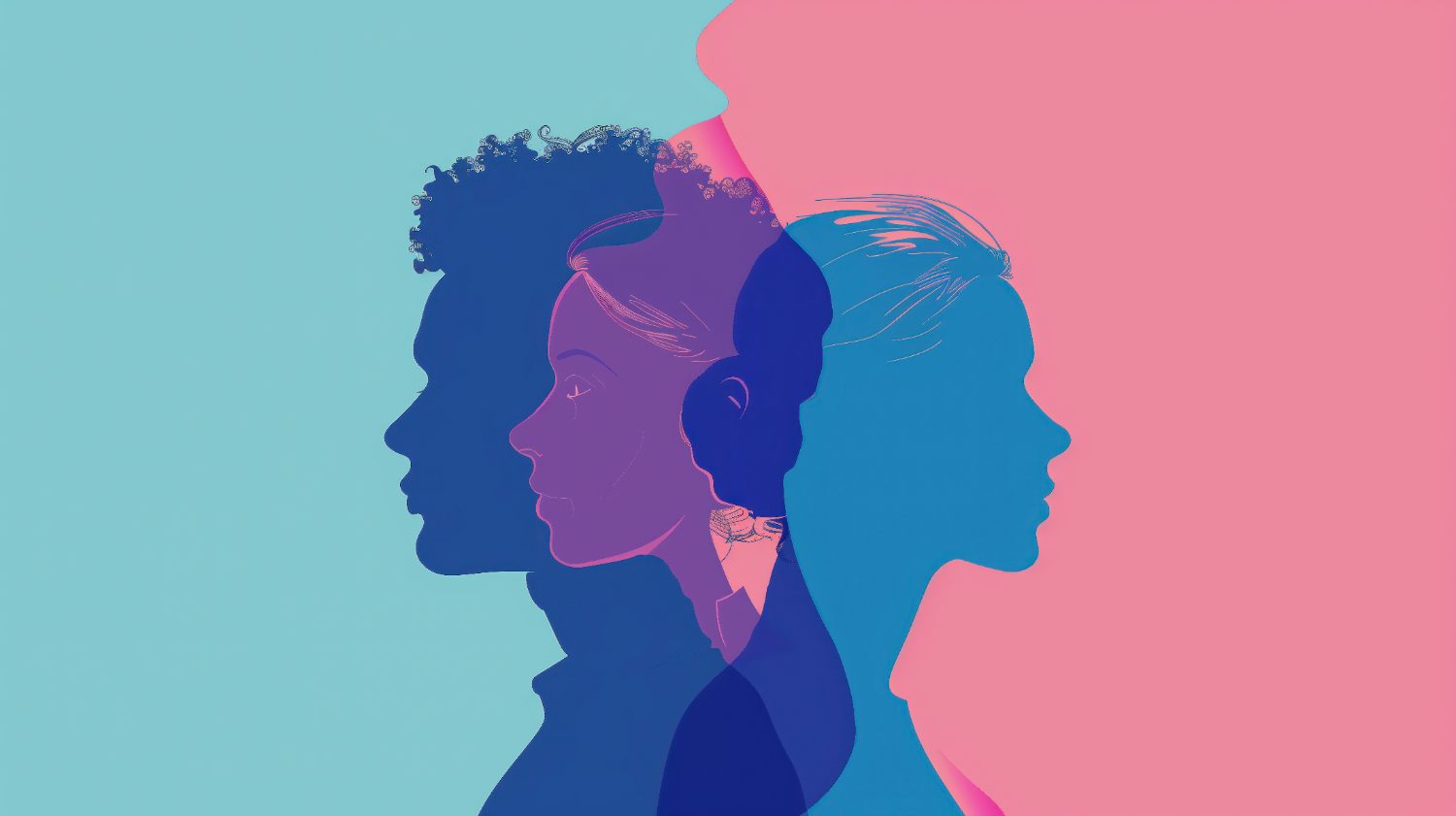
Psychology is a science that studies human behavior and cognition. The physiological behavior that psychology studies is related to human cognition. Therefore, in studying human cognition, behavior is studied. Behavior is studied by experimenting and measuring it, and the scientific method is used. By studying it systematically, we aim to understand human behavior and control and modify it. Psychologists distinguish between different types of psychology based on the specific factors they are interested in. Some of these types are:
- General psychology describes the basic concepts of the mind. It also studies adult humans.
- Biological psychology deals with the behavior and cognition of animals. The study of the functions of the nervous system and the endocrine glands.
- Child psychology studies the development of children, examining their strengths and weaknesses, how much of their strengths are due to genetics or the environment, and how children adapt to them.
- Animal psychology studies the behavior of animals.
- Abnormal psychology studies the abnormal behavior of adults.
- Social psychology studies how an individual’s behavior and cognition change through interaction with groups, and the information that is generated through group interactions. It studies families, groups, societies, mobs, leaders, and followers.
- Educational psychology examines education based on the development of children as understood through psychology. It also aims to apply psychological concepts related to teaching and motivation.
- Industrial psychology studies the use of psychological methods to select workers, train them on how to work, measure their abilities, etc. It studies the advertising and marketing of goods in commerce.
- Therapeutic psychology studies the use of psychology to treat mental illness. It is based on abnormal psychology.
Emotions and their accompanying physiological processes
Emotions include fear, anger, joy, sadness, etc. At birth, babies have only one or two emotions. By the age of two, many emotions have developed. At first, there are only a few things that cause excitement. As children grow older, the number of things that cause excitement increases, and even things that did not initially cause excitement can cause excitement. For example, a child may not be afraid of snakes at first, but as they grow older, they become fearful. Many fears develop in adults because of learning. Emotional responses are also culturally determined. Most people in a given group react to anger in the same way. This is because they learn from their peers. It is difficult to distinguish between different emotions based on their responses. People’s facial expressions, postures, and voices cannot be used to distinguish between anger, fear, and surprise.
When emotion occurs, changes occur in the body. Therefore, breathing, blood pressure, heart rate, arm and leg circumference, heart muscle activity, and skin conduct electricity occur, and these movements can be detected by measuring them. Usually, a device that measures a person’s emotion through external signs is called a ‘lie detector’.

Learning (Learning new things)
Learning (learning new things) is a very important aspect of psychology. Adult behavior is simply the result of learning. An adult’s motivation, emotions, skills, and reasoning are based on learning.
Conditioned Responses: The Basis of Early Learning
The behaviors we initially learn are conditioned responses. A bottle-fed baby will not suckle at first when it sees a bottle. It will suckle only after it has put the nipple in its mouth. After seeing the bottle, if it is put in its mouth and stimulates its mouth, the sensation of seeing the bottle will trigger a sucking response. This type of sucking is called a conditioned response.
How Dogs Learned to Associate the Bell with Food
This type of learning was first identified by the Russian psychologist Vadlab. When a dog was repeatedly rung a bell before being fed, and then rung without food, Bartholomew found that salivation occurred when the bell was rung. This observation led him to further investigate whether salivation was caused by light, smell, or touch, rather than by the sound of the bell. Again, this conditioned response can be eliminated. If the dog is not fed but is rung without food, the salivation stops. However, after a while, the dog may start salivating again by giving him food.
Conditioned Responses in Animals, Children, and Adults
While conditioned responses can be produced in animals and children, they are difficult to produce in adults. The development of speech, the development of attitudes, and many fears are all the result of learning in the same way.
Refining Behavior Through Trial and Error
Another type of learning is repeated learning. An animal will respond to a stimulus that has been repeatedly tested. In this experiment, many useless behaviors are made, and in the end, only the behaviors that satisfy one’s needs are made. When one does this repeatedly, one gives up the useless behaviors and only the behaviors that satisfy one’s needs, and learning is completed.
Thinking and Problem-Solving Compared to Animals
People are not like animals; when one tries again and again, one understands what one is learning and learns more quickly. A rat placed in a cage does the same thing, but if a person is in a cage, he learns to find a way out by forming words in his mind, thinking about it, and finding a way out.
Learning Through Trial and Understanding Connections
This kind of learning can also happen in animals. Psychologist Kara La has investigated this learning. The investigation went like this. Monkeys were put in a large cage, and a banana was hung on the roof where the monkeys could not reach it. A box was placed in one place in the cage. The monkeys jumped and tried to get the banana. But they couldn’t. Then some monkeys moved the box under the banana, and then jumped and pulled the banana. In this case, it was clear that the monkeys understood the connection between the box and the banana. When they understood, they learned quickly. Learning by association and repeated trial and error only improved gradually.
Remembering and Not Remembering
Learning involves remembering. There are four parts to remembering. To remember, you must (1) learn. To not lose what you have learned, (2) accept it. (3) remember what you have accepted, and (4) remember it. Remembering and remembering must be distinguished. Sometimes you remember but not remember. You can remember a verse, but you cannot remember which verse or who wrote it. Remembering is easier than remembering. You can remember a person, but you cannot remember his name.
Not remembering can be due to two main reasons. (1) Not remembering for a long time and (2) not remembering because of some obstacle. You cannot remember the experiences and practices that you have had normally, but you can recall them through hypnosis. (Hypnosis.)
If you practice one practice and then practice another, you will no longer remember the first practice. If you rest after practicing, you are more likely to remember. Psychologists say that not remembering is due to the mind not wanting to remember. Not remembering a person’s name is said to be due to the mind not wanting to remember that person. It cannot be denied that some not remembering is like this. Sometimes not remembering is due to emotions such as fear, anxiety, and restlessness.
Thinking
Imagination, contemplation, and reflection are all types of thinking. Let’s check whether animals are rational beings. Psychological research has shown that apes can solve problems by recognizing connections. Some animals can think about symbols. Considering these two points, it is difficult to say that animal thinking is the same as human thinking, but it can be said that they have a natural tendency to think. Thinking is thinking with the aim of solving a problem. In this way, thinking to solve a problem requires planning. It includes the selection of rules related to the problem. Psychologist Dewey stated that there are 5 stages in reasoning.
- A difficult problem initiates and stimulates reasoning.
- It provides a clear understanding of the problem.
- It leads to a thought that solves the problem.
- Each thought is refined to solve the problem completely. This is the essence of reasoning.
- Reasoning is completed by the final verification of truth and error.
Individual differences
The above has been described as a common phenomenon. Although there are similarities and differences between individuals, there are also differences. Intelligence, ability, and personality are all different from person to person. Psychologists have created and widely used intelligence tests. By using tests, a person’s intelligence and learning ability can be shown. They can be used to measure specific abilities with a fair degree of accuracy. Tests are used to guide a young person to a suitable career, to show that a worker is suitable for a particular job, to select those who can perform excellently in their duties, and to select those who are suitable for industry and the armed forces.
Psychologists also test personality. Personality questionnaires can reveal a person’s personality to a certain extent. They also use methods to test mental state through external behavior. One well-known method is the Rochester-based personality test. It combines intelligence tests, aptitude tests, personality tests, and behavioral tests to assess a person.
You can also read : Understanding Adjustment and Mental Health Challenges
Human Behavior
Our behavior is how we interact with people. A person’s behavior as part of a group is different from that of an individual. The influence of the group changes a person’s behavior. A person in a group tends to follow the crowd and behave irrationally. They imitate each other. We tend to conform to the behavior of our group. Are there differences in mental states from one person to another? If so, are they innate or are they cultural norms? When we consider these factors, Psychologists believe that people are different from one another because of differences in their environment. People within a group are more different than people between nations.
As we learn more about people through psychological studies, we can use psychology to improve people’s behavior in order to promote human progress, peace, and prosperity.
Leave a Reply